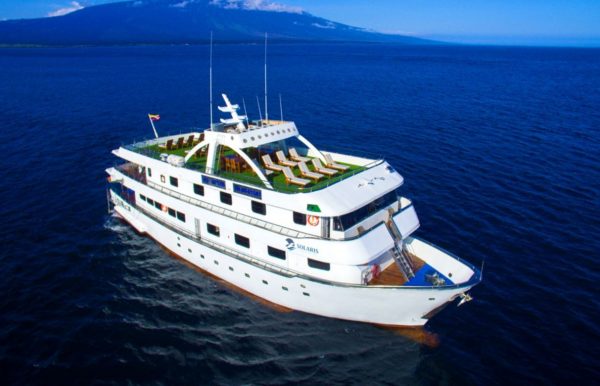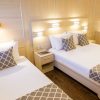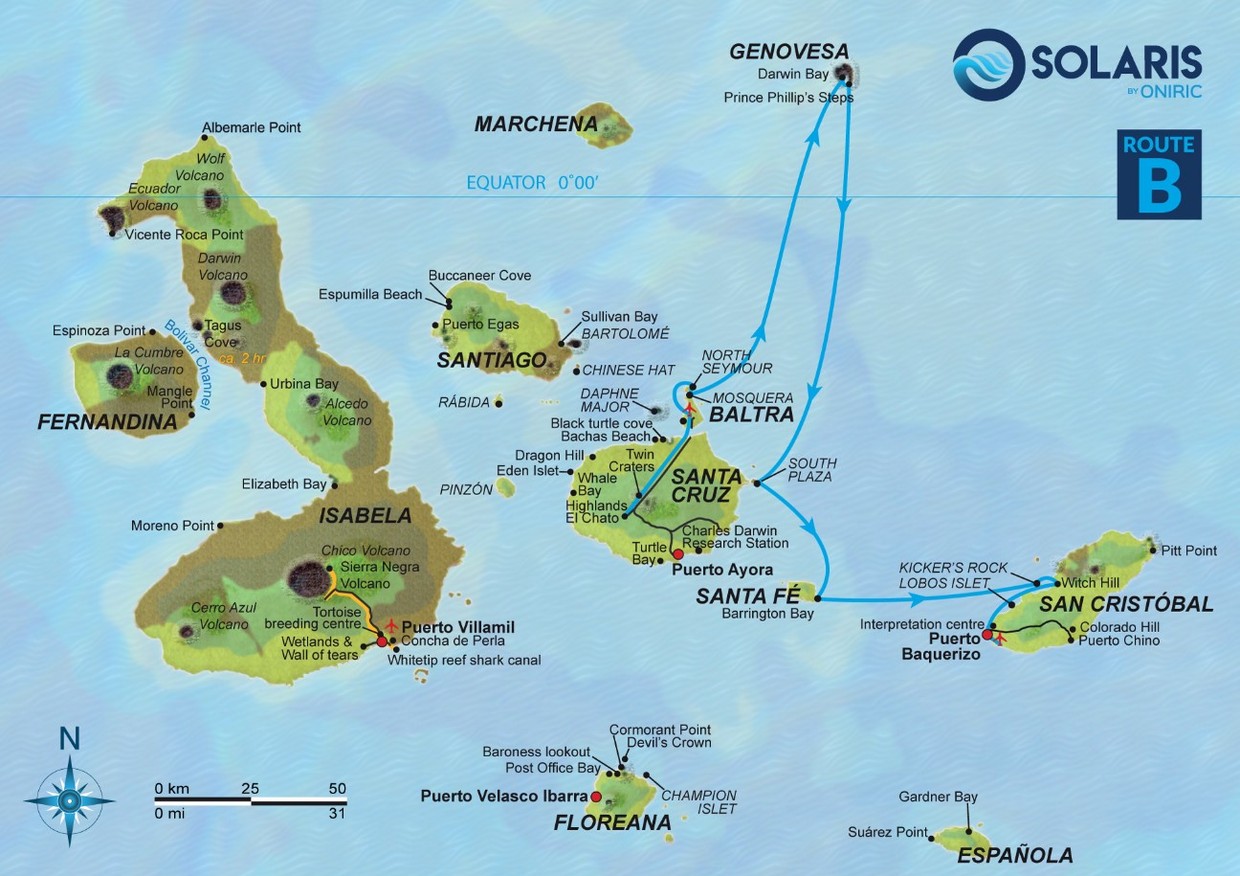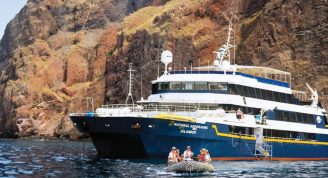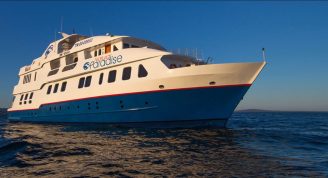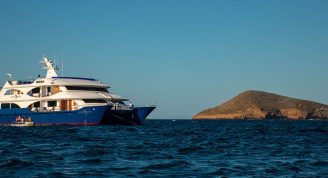Description
Our shortest route gets the most out of just four days on the Galapagos Islands. It combines the exclusive bird-island of Genovesa with the popular highlights of South Plaza and Santa Fe, giving an excellent first impression of the archipelago. Some of the visitor’s sites include Darwin Bay, Prince Phillip’s Steps, Barrington Bay, Kicker Rock and more.
Shorter and combination cruises are available, plase contact us for more information.
Trip Name
Galapagos Solaris Cruise Itinerary B
Days
5
Overview
Vessel Type: Motor Yacht
Passenger Capacity: 16
Lenght: 36 m
Built: 2019
Welcome aboard Motor Yacht Solaris! This beautiful and modern yacht comprises comfort and relaxation into one. There’s a special and unique feature that can’t be underestimated - this Galapagos cruise is 100% solo traveller friendly! You can forget about single supplement headaches and join one of our 5 main deck cabins! Furthermore, our trained crew & cruise director, assisted by our naturalist guide, will be ready to serve your every need, making your stay as comfortable as possible.


